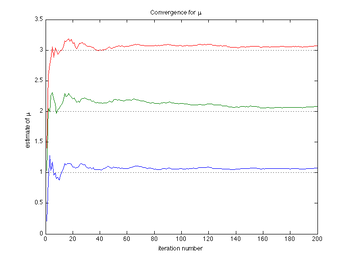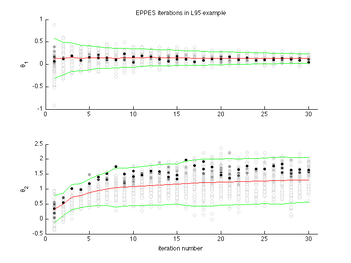
This page is accompanying the following two articles:
In these research articles, a concept is introduced and an algorithmic method described to include model parameter estimation in an ensemble prediction systems (EPS) used for probabilistic uncertainty assessment in operational numerical weather prediction (NWP). Such an EPS system is used at the ECMWF, for example. Here the target is to estimate so-called closure parameters that represent sub-grid scale physical processes, such as boundary layer turbulence or cloud microphysics. The physical parametrization schemes are used to express unresolved variables by predefined parameters rather than by explicit modelling.
The method for ensemble prediction and parameter estimation system (EPPES) is based on adding parameter perturbations to the ensemble members in addition to initial value and stochastic physics perturbations. Importance sampling algorithm is used to weight the proposed parameters in accordance to a suitable forecast skill score metric and an hierarchical statistical model is used to sequentially aggregate the information about the parameter uncertainty in the ensembles.
In the paper, the EPPES method is demonstrated using a stochastic version of the Lorenz 95 model. In addition to that example, a simple linear model is used here to demonstrate the convergence of the method.
The examples are coded in Matlab and the example web pages are produced directly from the Matlab code using the publish command. The source code for the examples can be downloaded here: eppes_examples.zip. If you wan to run the examples yourself, you will need some statistical utility functions that are part of the MCMC toolbox for Matlab (direct link to the toolbox code: mcmcstat.zip).
 |
 |
See the EPPES method article for details and further references to the
stochastic Lorenz 95 model. The model code used here is based on ECMWF
training course material by Martin Leutbecher and it is used with kind
permission.